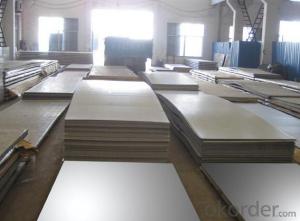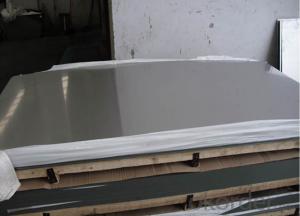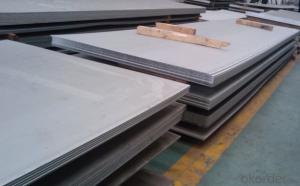Stainless steel plate/sheet 304,201,202,310S,316L,316Ti,304L,410,420,430,444
- Loading Port:
- Shanghai
- Payment Terms:
- TT OR LC
- Min Order Qty:
- 500 m.t
- Supply Capability:
- 5000000 m.t/month
OKorder Service Pledge
OKorder Financial Service
You Might Also Like
Stainless steel plate/sheet
304,201,202,310S,309S,316L,316Ti,321,304L,410,420,430,444,443,409L,904L
| Description | steel sheet,hot rolled steel sheet,cold rolled steel sheet, steel sheet,sheet,steel plate |
| Standard | ASME, ASTM, EN ,BS,GB,DIN, JIS etc |
| Application | Steel sheet applies to construction field, ships building industry, petroleum & chemical industries, war and electricity industries, food processing and medical industry, boiler heat exchanger, machinery and hardware fields. |
| Packaging | Standard export sea-worthy packing |
| Delivery time | 10-30 days |
| Note | Our company has cooperative relation between the domestic agents. Stainless steel sheet can be made accordingto the customers requirements. Fasten delivery. Quality assured. |
| Quality | No.1 |
| Productivity | 1200ton/day |
| Contacts | If you have any question,please feel free contact me. |
Stainless steel sheet surface finish characteristics
| Surface finish | Characteristics and application |
| 2B | The surface brightness and flatness of no2B is better than no2D. then through a special surface treatment to improve its mechanical properties,No2B could nearly satisfy comprehensive uses. |
| No.1 | Polished with abrasive belt of grit#100-#200, have better brightness with discontinuous coarse stria, used as inner and external ornaments for building, electrical appliances and kitchen utensils etc. |
| No.4 | Polished with abrasive belt of grit #150-#180,have better brightness with discontinuous coarse stria, but thinner than No3, are used as bathtub buildings inner and external ornaments electrical appliances kitchen utensils and food processing equipment etc. |
| HL | Polished with abrasive belt of grit #150-#320 on the NO.4 finish and has continuous streaks, mainly used as buildings ornaments elevators, door of building, frontal plate etc. |
| BA | Cold rolled, bright annealed and skin-passed, the product have excellent brightness and good reflexivity like mirror, kitchen apparatus, ornament etc. |
| 8K |
Product Shows :
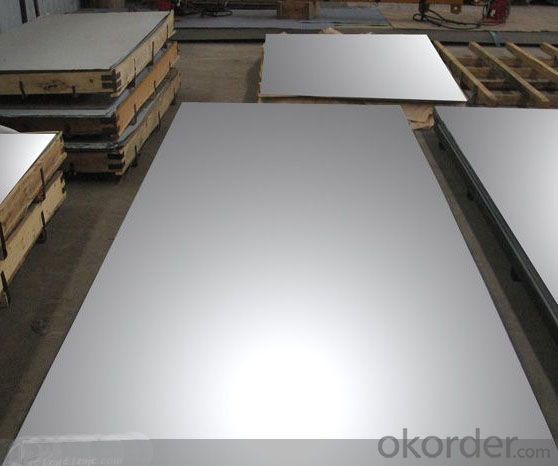

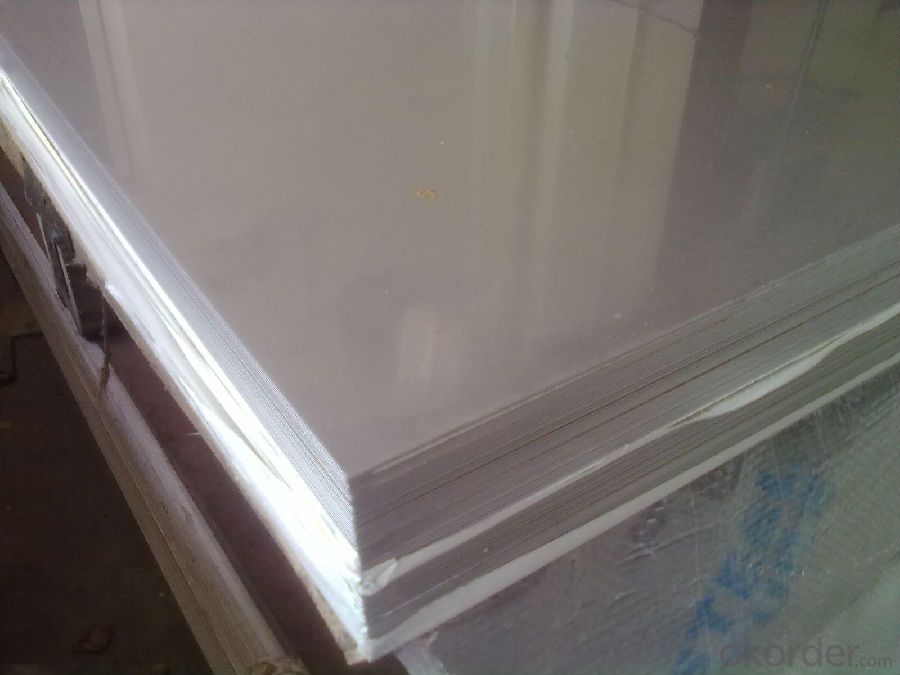
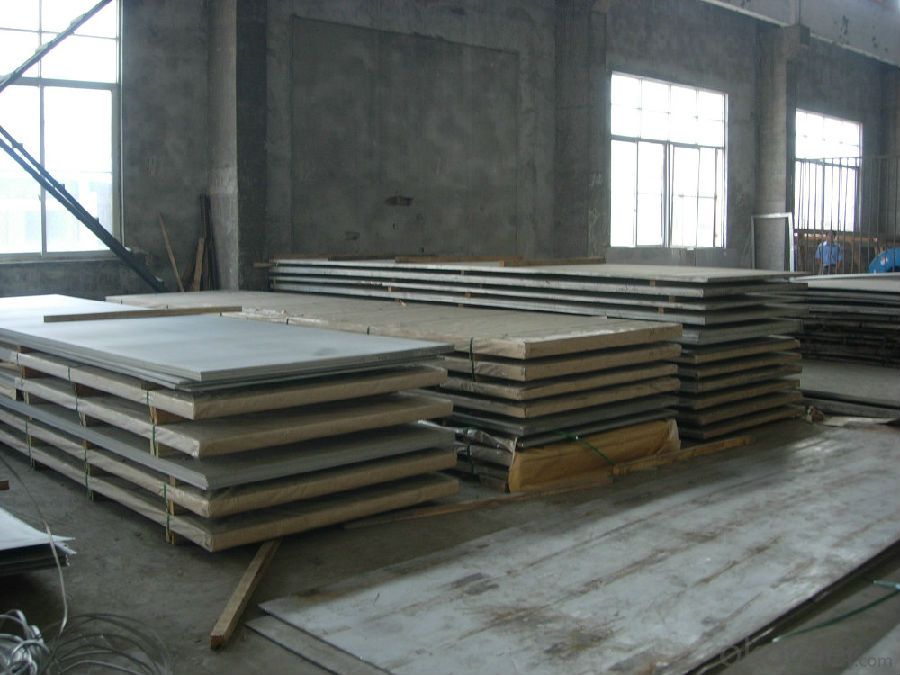

Application :
•Escalator, Elevator, Doors
•Furniture
•Production tools, Kitchen appliances, freezers, cold rooms
•Auto Parts
•Machinery and Packaging
•Equipment and Medical devices
•Transport system
Packaging and Loading

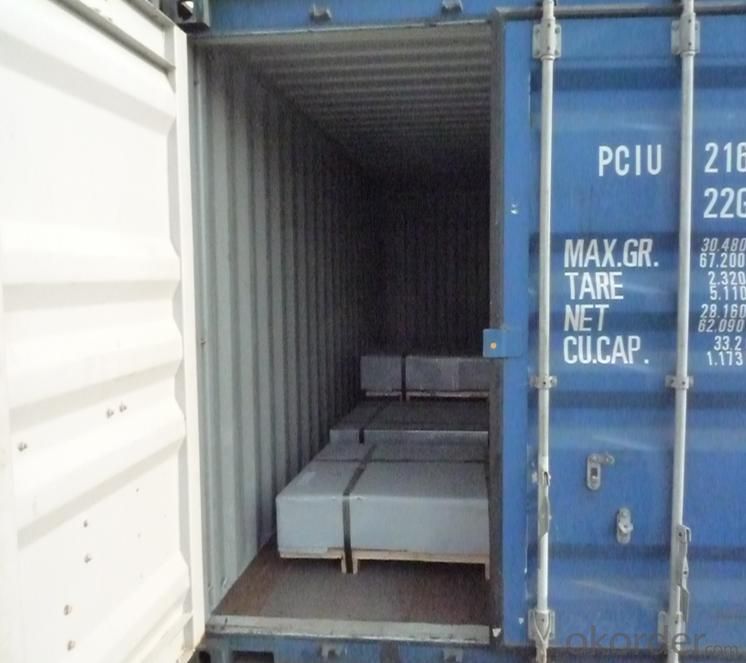
- Q:Are stainless steel sheets suitable for chemical storage tanks?
- Yes, stainless steel sheets are suitable for chemical storage tanks. Stainless steel is known for its corrosion resistance and durability, making it an excellent choice for storing various chemicals. It is resistant to many corrosive substances, including acids, alkalis, and solvents, which are commonly stored in chemical storage tanks. Stainless steel sheets also have a high strength-to-weight ratio, allowing for the construction of tanks that can withstand the pressure and weight of the chemicals. Additionally, stainless steel is easy to clean and maintain, making it a hygienic option for storing chemicals. Overall, stainless steel sheets are a reliable and suitable material for chemical storage tanks.
- Q:Do stainless steel sheets require any special handling during installation?
- Special handling is necessary when installing stainless steel sheets. Here are some important factors to consider: 1. Prevent Contamination: Stainless steel is easily contaminated by carbon steel, dirt, and grease. It is vital to ensure that the installation area is clean and free from potential contaminants. Additionally, the tools used for installation should be clean and free from other metals. 2. Protect from Scratches: Stainless steel sheets are prone to scratching during installation. It is crucial to handle them carefully and use protective coverings or wraps to prevent any damage. Furthermore, using non-abrasive tools and avoiding dragging or sliding the sheets across surfaces can help maintain their integrity. 3. Use Proper Fixing Techniques: Mechanical fasteners or adhesives are typically used to secure stainless steel sheets. It is essential to follow the manufacturer's recommendations or industry best practices for the specific installation method. This includes using the correct type and size of fasteners and ensuring they are properly tightened without causing damage. 4. Account for Expansion and Contraction: Stainless steel sheets expand or contract with temperature changes. During installation, it is necessary to provide adequate clearance or use expansion joints to accommodate this movement. Failure to consider thermal expansion can result in buckling, warping, or stress on the sheets. 5. Prevent Galvanic Corrosion: Direct contact between stainless steel sheets and dissimilar metals, especially those with higher galvanic potential, can lead to galvanic corrosion. To prevent this type of corrosion, it is important to use compatible materials and insulate stainless steel sheets from direct contact with other metals. By adhering to these special handling guidelines, stainless steel sheets can be installed correctly, ensuring their aesthetic appeal and durability are maintained over time.
- Q:What is the formability of stainless steel sheets?
- The ability of stainless steel sheets to be shaped or formed into desired geometries without cracking, tearing, or losing their structural integrity is referred to as their formability. Stainless steel sheets are highly regarded for their exceptional formability, thanks to their unique combination of strength, ductility, and corrosion resistance. They can easily be bent, rolled, or stretched into various shapes, making them versatile for a wide range of applications. Furthermore, stainless steel sheets can maintain their shape even in extreme temperatures or harsh environments, thereby further enhancing their formability. However, it is worth noting that the formability of stainless steel sheets can vary depending on the specific grade, thickness, and surface finish. Higher grades of stainless steel typically exhibit better formability, while thicker sheets may require more force to shape. The surface finish, whether it is cold-rolled or hot-rolled, can also impact formability as it influences the material's grain structure and mechanical properties. Hence, it is crucial to comprehend the specific characteristics and limitations of the stainless steel sheet being utilized in order to determine its formability for a particular application.
- Q:Are stainless steel sheets suitable for marine environments?
- Indeed, stainless steel sheets prove to be appropriate for marine environments. The remarkable resistance of stainless steel to corrosion and rust is attributed to the inclusion of chromium in its composition. Consequently, this renders it an exceptional material for utilization in marine environments, where consistent exposure to saltwater and moisture notoriously accelerates the corrosion of alternative metals. Moreover, stainless steel sheets possess commendable mechanical properties, high strength, and exceptional durability, further establishing their suitability for marine applications. Additionally, stainless steel exhibits ease of cleaning and maintenance, guaranteeing prolonged longevity and unwavering performance amidst harsh marine conditions.
- Q:What are the advantages of using stainless steel sheets?
- There are several advantages to using stainless steel sheets in various applications. Firstly, stainless steel is known for its exceptional corrosion resistance. It is highly resistant to rust and stains, making it a suitable choice for environments where moisture and other corrosive substances are present. This durability ensures that stainless steel sheets maintain their aesthetic appeal and structural integrity over time. Secondly, stainless steel is incredibly strong and durable. It has a high tensile strength, meaning it can withstand heavy loads and resist deformation. This makes stainless steel sheets ideal for applications that require robustness, such as construction, automotive, and industrial projects. Thirdly, stainless steel is hygienic and easy to clean. It has a non-porous surface that prevents the growth of bacteria and other microorganisms, making it a popular choice for food processing equipment, medical tools, and healthcare facilities. Additionally, stainless steel sheets are easy to maintain, as they can be wiped clean or sterilized without damaging the material. Moreover, stainless steel sheets are aesthetically pleasing and versatile. They have a sleek and modern appearance that can enhance the visual appeal of architectural designs, interior decorations, and kitchen appliances. Stainless steel sheets come in a variety of finishes, such as brushed, mirror, or textured, allowing for customization to suit specific design preferences. Lastly, stainless steel is an environmentally friendly material. It is 100% recyclable, which means it can be reused and repurposed without any loss in quality or performance. This makes stainless steel sheets a sustainable choice, reducing the need for new raw materials and minimizing waste. In conclusion, the advantages of using stainless steel sheets include excellent corrosion resistance, strength and durability, hygienic properties, aesthetic appeal, and environmental sustainability. These characteristics make stainless steel sheets a versatile and reliable choice for a wide range of applications.
- Q:What are the different types of textured finishes available for stainless steel sheets?
- There are several types of textured finishes available for stainless steel sheets, including brushed, embossed, hammered, linen, and mirror finishes.
- Q:How do stainless steel sheets differ from regular steel sheets?
- There are several key differences between stainless steel sheets and regular steel sheets. Firstly, stainless steel is an alloy that contains a minimum of 10.5% chromium by mass. This chromium content creates a protective passive layer on the steel's surface, preventing corrosion and staining. On the other hand, regular steel sheets are prone to rust and corrosion when exposed to moisture or certain chemicals. Secondly, stainless steel sheets have superior resistance to heat and oxidation compared to regular steel sheets. This makes stainless steel an excellent choice for applications that require high temperature resistance, like industrial furnaces or automotive exhaust systems. Thirdly, stainless steel sheets have exceptional strength and durability, making them suitable for various structural and industrial uses. Regular steel sheets may have lower strength and durability, depending on their composition and manufacturing process. Moreover, stainless steel sheets have an appealing appearance due to their smooth and shiny surface. This aesthetic quality makes them a popular choice in architectural, interior design, and decorative applications. Lastly, stainless steel sheets are known for their hygienic properties. They are non-porous and easy to clean, making them commonly used in industries with strict hygiene requirements, such as food processing, pharmaceuticals, and healthcare. In conclusion, stainless steel sheets differ from regular steel sheets in terms of their corrosion resistance, heat resistance, strength, appearance, and hygiene properties. These unique characteristics make stainless steel sheets the preferred material for many industries and applications.
- Q:Are stainless steel sheets resistant to UV radiation?
- Yes, stainless steel sheets are generally resistant to UV radiation. Stainless steel is primarily composed of iron, chromium, and other alloying elements, which provide excellent resistance to various forms of corrosion, including UV radiation. The chromium content in stainless steel forms a protective oxide layer on the surface, which acts as a barrier against UV rays and prevents the metal from oxidizing or deteriorating. However, it is important to note that prolonged exposure to intense UV radiation can still cause some discoloration or fading of the stainless steel surface over time. To maintain the aesthetics and integrity of stainless steel sheets in outdoor applications, it is recommended to periodically clean and protect the surface with appropriate treatments to ensure long-lasting performance.
- Q:What are the different sheet sizes available for stainless steel?
- Various sizes of stainless steel sheets are available to meet different needs and industry standards. The commonly used sheet sizes for stainless steel are 4 feet by 8 feet (48 inches by 96 inches) and 4 feet by 10 feet (48 inches by 120 inches). These sizes find extensive use in construction, manufacturing, and fabrication industries. However, stainless steel sheets can also be obtained in other sizes, depending on the specific requirements of a project. Some suppliers offer custom cutting services, enabling customers to order sheets in non-standard dimensions. This adaptability in size options guarantees that stainless steel sheets can be customized to fit various applications, ranging from small-scale projects to large industrial installations. Additionally, the thickness of stainless steel sheets can vary significantly. Standard thicknesses typically range from 0.4 millimeters to 12 millimeters, although thicker or thinner sheets can be produced upon request. The selection of different thicknesses is based on the desired strength and durability for a specific application. Ultimately, the availability of diverse sheet sizes for stainless steel ensures that customers have the freedom to select the most appropriate dimensions for their project's unique requirements.
- Q:Can stainless steel sheets be used for heat recovery systems?
- Heat recovery systems can utilize stainless steel sheets. Stainless steel is known for its high thermal conductivity and corrosion resistance, making it an ideal material for heat transfer applications. In heat recovery systems, stainless steel sheets are commonly employed as heat exchanger plates or tubes because they efficiently transfer heat from one fluid to another. The corrosion resistance of stainless steel guarantees the durability and reliability of the heat recovery system, even in harsh environments and at elevated temperatures. Furthermore, stainless steel sheets can withstand thermal expansion and contraction, enabling their use in different heat recovery system designs. Overall, stainless steel sheets are a favored option in heat recovery systems due to their exceptional heat transfer properties, long-lasting nature, and resistance to corrosion.
1. Manufacturer Overview |
|
|---|---|
| Location | |
| Year Established | |
| Annual Output Value | |
| Main Markets | |
| Company Certifications | |
2. Manufacturer Certificates |
|
|---|---|
| a) Certification Name | |
| Range | |
| Reference | |
| Validity Period | |
3. Manufacturer Capability |
|
|---|---|
| a)Trade Capacity | |
| Nearest Port | |
| Export Percentage | |
| No.of Employees in Trade Department | |
| Language Spoken: | |
| b)Factory Information | |
| Factory Size: | |
| No. of Production Lines | |
| Contract Manufacturing | |
| Product Price Range | |
Send your message to us
Stainless steel plate/sheet 304,201,202,310S,316L,316Ti,304L,410,420,430,444
- Loading Port:
- Shanghai
- Payment Terms:
- TT OR LC
- Min Order Qty:
- 500 m.t
- Supply Capability:
- 5000000 m.t/month
OKorder Service Pledge
OKorder Financial Service
Similar products
New products
Hot products
Related keywords

